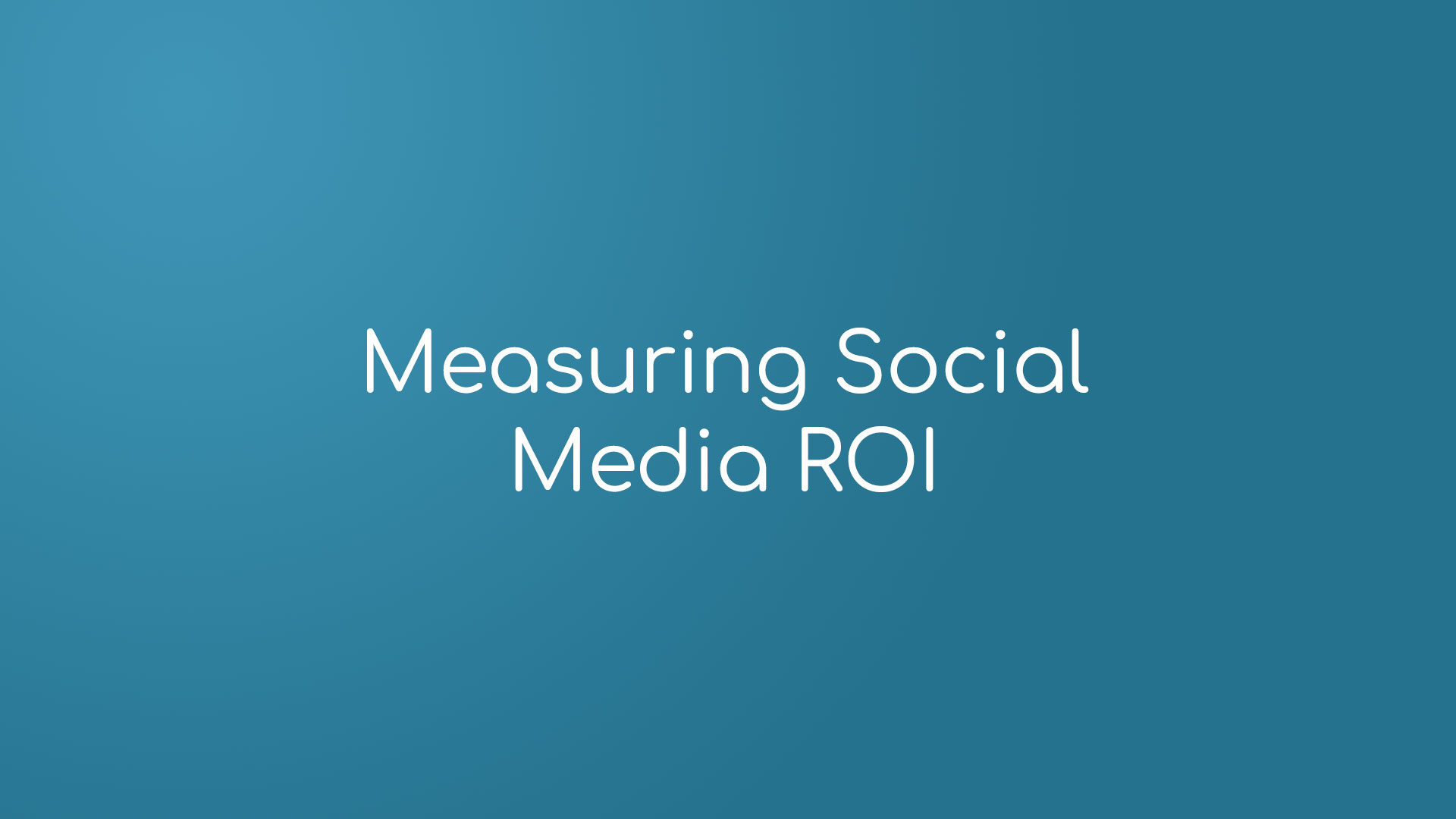
It is important to measure the return on your investment in social media for maximum impact. You can track your ROI with social media marketing in many ways, including cost, engagement rate and other metrics. These are some tips that will help you calculate your ROI.
Metrics for engagement rate
Engaging your followers is essential to generating an ROI from social media marketing. This engagement metric tracks how often your audience interacts socially with your content. Divide the number interactions by the reach, impressions, and reach of your social campaigns to calculate the engagement rate. A higher engagement rate means more customers and easier conversions.
The average engagement rate (AAR) is a measure of how often your audience interacts with your content, such as sharing, retweeting, liking, and commenting. Google Analytics gives you the ability to find out the engagement rate per post. You will find the engagement rate on different platforms can vary. Be sure to review each platform's name convention. Divide the total interactions by the total followers in order to calculate the average engagement for a post.
Cost
An effective social media campaign can bring in tons of people and engage them. But how do you measure its success? The metrics you collect will allow you to decide which content is most appropriate for your audience. These metrics should be recorded and integrated into your workflow. One aspect of social media campaigns that is often overlooked is cost. However, it is an important factor in your ROI. Here are the four factors that will determine your ROI on social media.

Determine how many hours you'll spend creating and promoting content. Time for research, planning content creation, publishing, reviewing, and editing should all be included in your social media budget. Some of these tasks can be performed by freelancers, but you'll need to account for your internal employees' time and hourly wages. Other costs for content creation include video, graphics, and copywriting. You'll be spending most of your time creating content internally, but you will need to budget for social media ads. Identify the success metrics for each campaign to determine the cost per click or conversion.
Measuring investment return
It is vital to calculate the return of investment when using social media. This is done in order for you to optimize your marketing strategy and establish if it is helping you achieve your business objectives. The ROI report should capture all types of contributions, including monetary and non-monetary. This includes both long-term and short-term improvements. It should highlight both areas where your strategy is successful and areas that could use improvement. These are some ways to measure social media ROI.
The goal should be clearly defined. You must establish a measurement to determine the return on investment of social media efforts to promote your business. The click-through rates and cost per-click of a Facebook advertisement are great metrics to measure ROI. Importantly, you should monitor each of these metrics to see how much revenue they generate. The social media landscape is constantly changing, so monitoring your paid ROI is essential for the success of your marketing strategy.
Non-monetary metrics
While it is important to measure social media success by metrics, it is just as crucial to measure social media's "human" side. Metrics like sales are important but metrics such as social capital, influence and reputation are more important. Jim McLaughlin describes 100 non-monetary social media metrics in his preface, which David Berkowitz summarized. You can measure how successful your social networking strategy is by measuring these metrics.

Social media's basic output can be measured with many metrics. This includes how often you post or optimize your content. You can see the impact of these metrics as you experiment with new activities, and how they impact your business. It is possible to measure average response times for solving problems or answering questions. This is a great indicator of how effective your strategy works. Another example of this is the number or likes to a post.
FAQ
Where should I start with Content Marketing?
Start by identifying your audience. What are their needs? What are their needs How can they be helped? How can you help them?
What Content Marketing Strategy is right for me?
A Content Marketing Strategy is perfect if you know exactly what you want to communicate.
But if you're unsure where to start, here are some questions to ask:
Does my business need to communicate something specific? Or am I looking to create content that resonates across a range of audiences?
Is it better to generate leads or convert visitors into buyers?
Is it one product I am trying to promote or multiple products
Are there people I'd like to meet outside of my industry, or am I open to reaching them?
If you answered "yes" to any of these questions, then a Content Marketing strategy is exactly what you need.
How does content-marketing work?
Content marketing is successful because it produces valuable, engaging content which provides value.
You build relationships with your audience by providing useful information, solving problems, entertaining, or engaging them. People will respond positively to positive messages from brands they trust.
Things that are interesting to them are what people enjoy reading. Writing something interesting will make your readers return time and again.
Your content should inspire people to act - whether they are buying your product, signing on for your newsletter, visiting you website, or sharing your article via Social Media.
The key to successful content marketing is to write compelling copy that engages your target market and provides them with the information they want and need.
What are the 7 Steps of Content Marketing?
The seven-step process for content marketing includes:
-
Identify the problem
-
Learn what is working right now
-
Create new ideas
-
These strategies can be developed
-
Test them
-
Get the best results
-
Continue the process until you find a solution.
This approach has been proven to work well for businesses large and small.
How do you create an effective content marketing strategy?
First, decide what type of content you want. This will help you create a content marketing plan that is effective. Next, identify your target market and the ways they use the internet. Next, identify which channels best reach your target market. Next, find the right keywords and create compelling copy to promote each piece of content.
Statistics
- According to our research, brand awareness, attracting traffic, and generating leads remain the key content marketing goals in 2022. (semrush.com)
- Out of the 1,500 marketers we surveyed for our State of Content Marketing report, 78% who felt their content marketing strategy was exceptionally effective in 2021 had documented their strategy. (semrush.com)
- Companies that use content marketing see approximately 30% higher growth rates than businesses not using it. (mailchimp.com)
- An example of an overarching goal could be: "In 2022, we want to achieve a 20% increase in revenue created by organic content and generate 15,000 MQLs with a budget of $30,000." (semrush.com)
- According to research compiled by Coschedule: Companies that publish 16+ blog posts a month get as much as 3.5x as much traffic as those that publish 0-4 posts a month. (criteo.com)
- Forty-seven percent of buyers view 3 to 5 pieces of content before engaging with a sales representative. (mailchimp.com)
- Content marketing produces 3X more leads per dollar spent. Content marketing costs 62% less than traditional marketing. (criteo.com)
- We found that 40% of businesses don't have a documented strategy yet. (semrush.com)
External Links
How To
How can you create a content marketing strategy for your business?
It is important to first understand the content that you wish to create for your clients. Once you have this information, it is time to begin creating content. This could include creating an editorial calendar or planning where these pieces will come. Content should always have a purpose. It doesn't matter if it's blog posts, social media updates, e-books, or anything else, but they should all serve a single goal.
Once you determine which type of content you want to produce, then it's essential to find out who your target market is. Which market are they most interested in and what is their motivation for buying the content you offer?
After identifying your target market, next comes finding ways to communicate with them. Although social media platforms can be a great way of connecting with people, there are many other options, including videos, podcasts, webinars and webinars.
Once you have decided how you will communicate to your market, the next step in your content creation process is to identify what topics and types you want. Again, this goes back to determine why you're writing the content. What problem does this solve? Is it helpful? Does it make their life easier
Now that you're clear about the type of content you create, it's time you decide what to say. What do you want? On current events? Concerning specific products and/or services? Your focus will be determined by the answer to this question.
Finally, after answering all those questions, it's the right time to combine everything in one package.
It is important to make sure that each piece of content you create serves its intended purpose. You don’t want to waste anybody’s time and energy. So make sure that you include quality in every aspect of your content.
A great content marketing strategy is not complete without many moving parts.